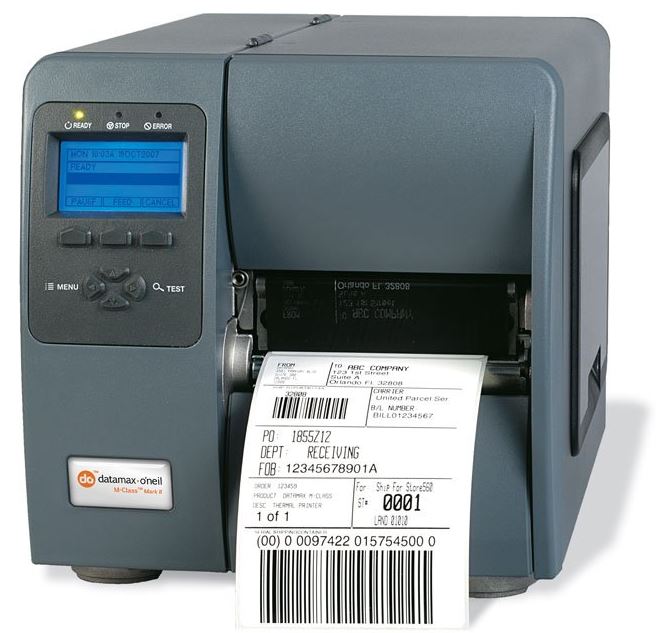How Does a Thermal Printer Work?
Thermal printers offer distinct advantages over normal inkjet printers in a variety of ways. Typically, companies commonly use these types of printers to print business related materials that an inkjet printer would not be capable of doing. The fundamental difference between a thermal printer and a normal printer, is a thermal printer uses heat to produce an image. This process provides distinct advantages and uses.
Thermal Printer Uses
Do thermal printers use ink like normal printers? A thermal printer works differently because they work by utilizing small heating elements in order to activate and transfer an image. Thermal printing is commonly used in commercial industry and many businesses to print things such as:
- Labels
- Safety signs
- Barcodes
- Shipping labels
There are two different types of thermal printer with both having their own purpose.
Direct Thermal Printer
A
direct thermal printer works by using a thermal printhead that heats chemically-treated paper. When the heat is applied to the paper, it darkens, and an imprint is left behind. You may not realize it, but you come into contact with materials printed from a direct thermal printer all the time as they are most commonly used to print receipts and other common business labels such as shipping labels.
Thermal Transfer Printer
Unlike direct thermal printers, a
thermal transfer printer uses an ink ribbon that when heated by a thermal printhead, melts the ink onto the label to form the image. Thermal transfer prints are known for creating crisp, glossy prints. The color and density of images printed by a thermal transfer printer is determined by both the ribbon and the resolution of the printer being used. Because of this, thermal transfer printing creates highly consistent, reliable prints.
Benefits of a Thermal Printer
Thermal printers provide several key advantages over most regular printers. Some of these advantages include:
Durability – Prints created from a thermal printer are more consistent and are able to withstand certain elements that normal prints cannot. This makes them ideal for certain printing jobs that include outside signage, labels, and floor markings.
Flexibility – The amount of different print types a thermal printer can be used for make them highly desirable for many different types of businesses. Any company that needs to perform regular print jobs of labels, receipts, as well as floor labels and signage that can withstand harsh conditions will definitely want to invest in a thermal printer.
Efficient – Thermal printers are able to utilize recycled materials making them environmentally friendly.
Long lasting – thermal printers typically require less maintenance and work very reliably.
Why Use a Thermal Printer?
The versatility and reliability of these printers are what draw companies to thermal printing technology year after year. The sheer functional nature of a thermal printer makes them valuable for companies in all different types of industries. Not only are they able to create a variety of different prints which include labels, signage, receipts and more; they most often are very quiet machines that won’t disturb employees or customers who are near the machine.
Shop both direct thermal and thermal transfer printers right here at Barcodes, Inc or talk to one of our experts today for professional help in deciding which printer is best suited for your needs.

